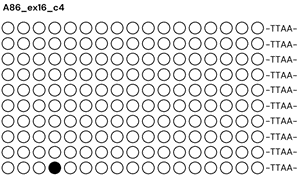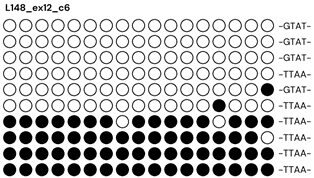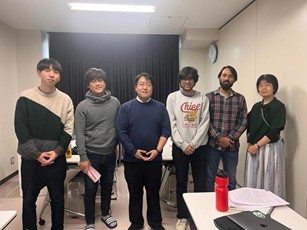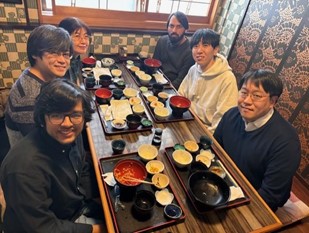- HOME
- Education
- Student's Voice
- 【IRCMS Internship】Mr. Abhinav Purohit (Indian Institute of Science Education and Research, Bhopal In...
Student's Voice

Name: Abhinav Purohit
Indian Institute of Science Education and Research, Bhopal, India
Visiting Period: December 5th (Thu), 2024 - December 27th (Fri), 2024
Country: India
Lab: Laboratory of Epigenetic Inheritance
Q1. Summary of the internship (Description of the research conducted, aim, introduction of lab, and things you learned)
The primary goal of my internship was to learn all the basic techniques that I would require to work in Dr. Takahashi's lab, including the culturing of mouse embryonic stem cells (mESCs) and bisulfite sequencing. The larger goal of my internship in the lab is to generate DNA methylation-edited mouse ESCs at two distinct loci (Oma1 and Plagl1). I integrated a CpG-free cassette into their promoters' CpG islands (CGIs) to induce de novo DNA methylation. We hypothesized that DNA methylation at these loci should be stably maintained throughout generations, even after extensive passaging of the murine ESCs.
Induction of de novo methylation at the CGIs of Oma1 and Plagl1 by incorporation of a CpG-free cassette
Murine ESCs were cultured on a monolayer of MEF cells. ESCs (two separate wells) were subsequently transfected with the targeting vector (containing the CpG-free cassette and homology arms), the sgRNA for the respective loci, and Cas9-gfp. Drug selection with G418 was carried out one day after transfection. I picked colonies from the Oma1 plate after day 5 and ran a genotyping PCR to verify my clones. Remarkably, I could get multiple successful clones, after verification via genotyping PCR.
Preparation of Human induced pluripotent stem cells (iPSCs) for DNA methylation studies
I also learned the preparation of human induced pluripotent stem cells (iPSCs) from a culture of human lymphoblastoid cells. Primary lymphoblastoid cells were transfected with plasmids expressing Oct3/4, Sox2, c-myc, KLF4, and p53 in order to reprogram these cells into a pluripotent state.
Analysis of DNA methylation status at the Ankrd and Ldlr loci
I performed bisulfite-sequencing analysis to check methylation status at the Ankrd and Ldlr loci in various conditions. For example, 17 samples were sent for sequencing post-bi-sulfite conversion. Ankrd86 ex39 c7 to Ankrd86 ex39 c23. The presence of a TTAA sequence (mark for successful excision activity) was checked, and CpG methylation status was analyzed. I found that C7, C8, C12, and C19 show expected methylation levels, while the rest show much lower methylation than expected. TTAA sequence is present in all the sequencing results, confirming the success of excision.
Samples C8 and C18 from above, two other Ankrd86 samples, and one Ldlr post-excision sample are being cloned for precision bi-sulfite sequencing (cloning of the heterogeneous population of PCR products post bisulfite seq).
Cloning of the post-bisulfite converted PCR products was performed for A86_ex16_c4 and L148_ex12_c6.

0.6 % Methylation, all clones showed the presence of the TTAA sequence. A86_ex16_c4 is a control clone for TTAA+, Methylation-. Therefore, our findings show that 0.6% methylation was as expected.

39.4 % Methylation, all clones showed the presence of the TTAA sequence.
In my internship, I got hands-on experience in culturing mESCs, preparing iPSCs, and carrying out bisulfite sequencing for DNA methylation analysis. I have developed a better thought process on how to approach problems in the field of epigenome editing and epigenetic inheritance.
Q2. What did this experience do for you with respect to your specific career development directions?
I have always been fascinated by epigenome editing, and this internship finally allowed me to realize my interests. Prof. Takahashi's DNA methylation editing technology is the first to induce stable synthetically de novo methylation in human and murine pluripotent stem cells, maintained even after the CpG-free DNA removal, extensive passaging, and differentiation. Moreover, he could further show transgenerational epigenetic inheritance in mammals. His pioneering work was my primary reason for applying for an internship in his lab, and my one-month internship experience has solidified my interest. I am highly motivated to continue working in this domain and contribute to deciphering the mechanism of epigenetic inheritance.
Q3. What did you enjoy about life at Kumamoto University (Kumamoto city or Japan)?
Kumamoto city is peaceful. I had a beautifully calming experience in the city. The food is incredible, the people are kind, and the research center is one of the best I have seen so far. Overall, Kumamoto started feeling like home to me in my one month there.

Photo1: Lab Group
Message to prospective students
The internship is an excellent opportunity to attain valuable research experience in various medical sciences-related fields, including stem cells, cancer, and aging. The internship was a transformative experience for me and has allowed me to gain experience in a unique research domain. I highly recommend this internship program to any undergraduate student interested in exploring new and emerging medical research fields.

Photo2: Lab Lunch
